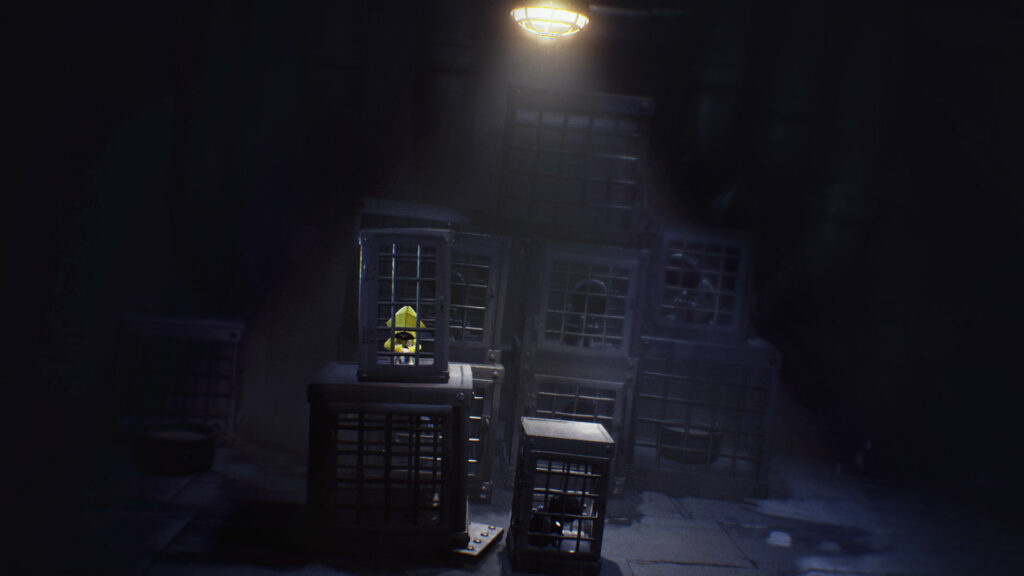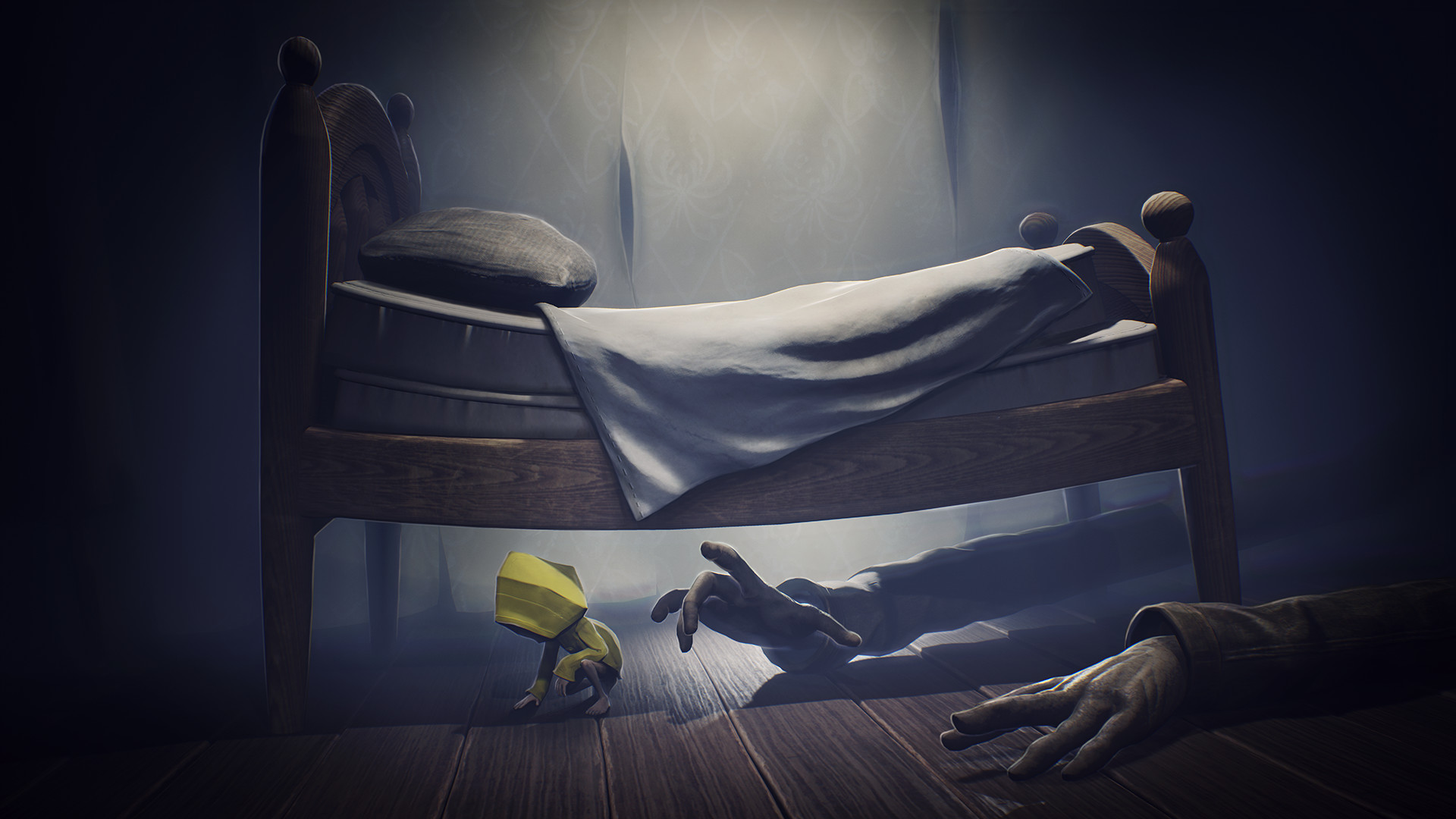Little Nightmares, released in 2017 by Tarsier Studios, is a puzzle-platformer horror adventure game that has quickly etched its name into the hearts of horror enthusiasts and casual gamers alike.
With its sinister atmosphere, intricate puzzles, and haunting visuals, this game takes you on a gripping journey through the eerie depths of The Maw. In this review, we dissect the elements that make Little Nightmares a nightmarishly brilliant experience.
Plot & Setting
The game takes place in The Maw, a grim, underwater facility that beckons you to unveil its dark secrets. You play as Six, a small, raincoat-clad child. With little exposition, the game immerses you in a realm where grotesque creatures lurk and everything seems designed to ensnare the innocent. The story is told in a cryptic manner, making players piece together the narrative through environmental clues and subtle visual storytelling. This enthralling form of storytelling keeps players engaged and invested in the world and its characters.
Gameplay & Mechanics
Little Nightmares expertly blends puzzle, platforming, and stealth mechanics. As Six, players must navigate through a series of rooms and areas, each posing unique challenges. There are puzzles that require keen observation and logical thinking, and intense chase sequences that will have your heart racing.

One of the most striking features of the game is its use of scale. Six is small compared to the environment, turning everyday objects into insurmountable obstacles or useful tools. This clever design choice not only makes puzzles more interesting but also emphasizes the vulnerability of the protagonist.
The controls are simple but effective, and while the game is not particularly long, the pacing is near-perfect. Each new area introduces fresh gameplay mechanics, ensuring that the experience never feels stagnant.
Visual & Audio Design
The art direction in Little Nightmares is nothing short of phenomenal. The Maw’s environments are meticulously crafted, and the character designs are both grotesque and captivating. The use of lighting and shadows not only enhances the atmosphere but plays a functional role in the gameplay, especially during stealth segments.
The sound design and music are equally impressive. The eerie ambient noises, the creaking of the ship, and the distant wails create an aural landscape that immerses players in the game’s universe. The music, composed by Tobias Lilja, complements the game’s aesthetic, blending perfectly with the visuals to create an unforgettable ambiance.

Cultural Impact
Since its release, Little Nightmares has garnered a cult following. Its dark themes and chilling atmosphere have resonated with players, inspiring numerous fan arts, theories, and discussions. The game has also been praised for its portrayal of childhood fears and the vulnerable experience of growing up in a world filled with unknown horrors.
Little Nightmares also revitalized interest in atmospheric horror games, with its success paving the way for other indie horror games to thrive.
Conclusion
Little Nightmares is a masterclass in atmospheric horror. Its enthralling narrative, captivating visuals, and engrossing gameplay make it a must-play for any gaming enthusiast. It’s a finely-crafted journey through a hauntingly beautiful world that stays with you long after the credits roll.
For Beginners
If you’re new to gaming or the horror genre, Little Nightmares is an accessible and engaging introduction. Its controls are easy to grasp, and while the puzzles and stealth mechanics can be challenging, they never feel insurmountable. The game’s length is also just right, making it a fulfilling experience without being overwhelming for newcomers.
As a beginner, don’t be afraid to explore the environments and experiment with different approaches to solving puzzles. Most importantly, allow yourself to become immersed in the atmosphere and story. It’s a game best enjoyed when you let its dark embrace envelop you.


